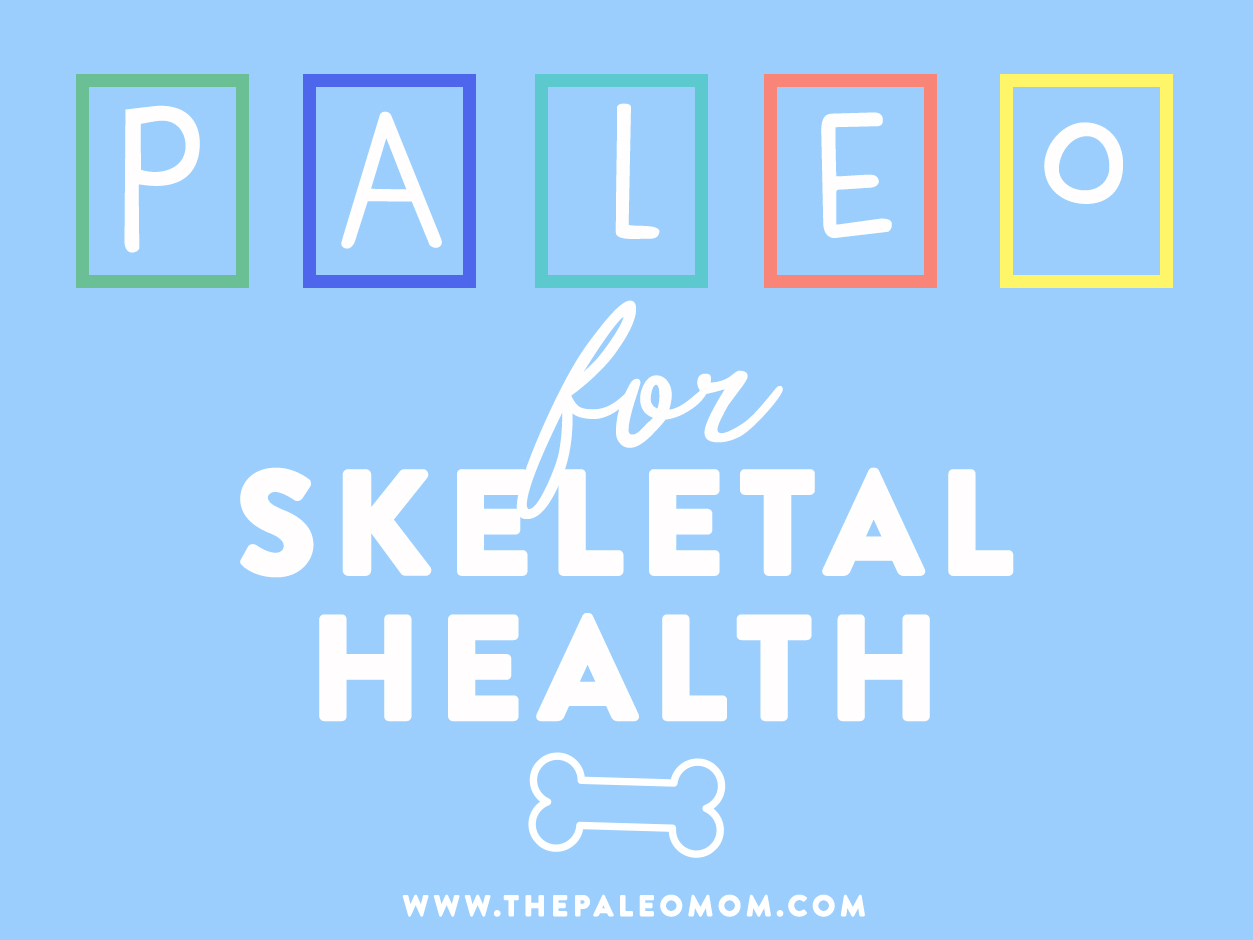Dr. Sarah Ballantyne PhD., a medical biophysicist from the University of Western Ontario, explains why the Paleo diet helps prevent osteoporosis.
The Paleo Diet for Skeletal Health ~ The Paleo Mom
By Dr. Sarah Ballantyne, PhD
September 17, 2018
Osteoporosis affects approximately 10 million Americans over the age of 50, and a further 34 million older Americans have low bone mass (osteopenia). And brittle bones in our later years is a major mortality risk. For example, 1 in 5 people who fracture a hip die withing 6 months (and if you extend that time frame to 1 year, it’s even worse, 1 in 4 die). Keeping our bones healthy can greatly improve our health in old age, but it comes in handy at any time of life! Our bones provide structure to our bodies, anchor our muscles for movement, protect our organs, and store calcium and other minerals for us. The good news is that it’s relatively easy to support our skeletal health, by providing the right nutrients and the stimulus of activity!
Is Dairy Essential for Bone Health?
“Milk, it does your body good,” or so we’ve been told by actors and models with comical milk mustaches since the 1980s. However, once we recognize that there are several reasons why dairy products are not ubiquitously beneficial (see The Great Dairy Debate), the natural follow up question is “but, what about bone health?” Dairy products are not the only good source of calcium out there. In fact, fruits, vegetables, nuts, seeds, meat, and seafood all contain substantial quantities of calcium.
It’s easy to see how a veggie-rich Paleo diet with an emphasis on seafood plus nuts and seeds in moderation can provide the Recommended Daily Allowance of calcium every day. Another calcium-rich superstar is blackstrap molasses, discussed in Blackstrap Molasses: The Sugar You Can Love!.
Not only do fruits, vegetables, nuts, seeds, and seafood contain substantial amounts of calcium, but there is scientific evidence that we absorb more calcium from cruciferous vegetables (like kale) than we do from dairy. Cruciferous vegetables (like kale, cabbage, broccoli, collard greens, and turnip greens) may be the best source of dietary calcium. In fact, several studies show that fruit and vegetable intake correlates much more strongly with bone health than dairy intake. In fact, the scientific evidence is mixed on dairy and bone health, with some studies indicating that higher dairy consumption may increase the risk of fractures and osteoporosis. Yes, to prevent osteoporosis and look after your bones, eat your veggies!
Other great sources of dietary calcium include green leafy vegetables, nuts (especially almonds), seeds (especially sesame seeds), figs, oranges, dried apricots, okra, bok choy, and seafood (especially when we eat the bones as you would with canned salmon or sardines). Other fruits and vegetables also provide calcium, though to a lesser extent. Organ meat and long-cooked bone broth are sources of not only calcium, but also magnesium, phosphorous and collagen, which are critical for bone health as well. The fact that minerals other than calcium are needed for healthy bones might be one of the reasons higher vegetable intake correlates with better bone health—vegetables also provide these other essential minerals, whereas dairy contains only a handful of nutrients.
Also, worthy of note: vitamin D status influences calcium absorption. So, testing to make sure your serum vitamin D levels are in the functional range (50 to 70 ng/mL is probably optimal) and supplementing accordingly is essential. Read more in Vitamin D.
Bones Need More than Calcium
Bone health is about much more than calcium. In fact, there’s at least twenty micronutrients that are essential for bone health, either as constituents of bone, required for enzymatic activity involved in bone remodeling, or as regulators of bone formation. Bone is composed of a mixture of minerals (calcium, phosphorous, magnesium, sodium and potassium, mainly) deposited around a protein matrix that acts as a scaffold. It’s the combination of inorganic (minerals) and organic (protein) materials that provide bone with both strength and flexibility. About 65% of bone tissue is minerals, chiefly calcium and phosphorous bound together in a molecule called hydroxyapatite. The remaining 35% a protein matrix, 90 to 95% of which is type I collagen. Collagen fibers cross-link and twist around each other, forming the interior scaffolding upon which bone minerals are deposited.









